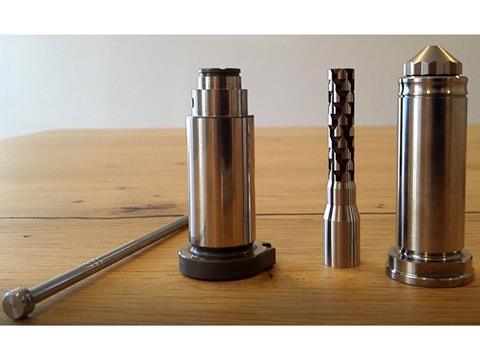We find out about Keiryo Packaging’s new technology that sets out to improve polymers’ performance by introducing a 3D printed part into existing industrial assets. The company is a finalist in the pre-commercialized Driving the Circular Economy category.

You’re a finalist in the Sustainability Awards 2022. Congratulations! To start off, could you summarise your entry, Keiryo Packaging’s polymer processing technology, in less than 50 words?
Keiryo develops a processing technology that improves the polymers’ performance, herewith reducing both the environmental footprint and the manufacturing cost of various polymer-based articles like PET bottles.
This is achieved by introducing a 3D printed part into existing industrial assets which makes the Keiryo technology highly scalable and cost efficient.
Why do you think the judges were impressed with your entry? Tell us about what is innovative about your project and/or about its impact on packaging sustainability.
I think that the jury may have been impressed by a combination of factors: the ingenuity, the resulting scalability, the low technology adoption costs and application versatility.
At the technology conception level, KP looked for scientific pathways to maximize the performance of existing polymer materials. How can we extract more value out of the same base polymer? The answer lies in an ingenious utilization of an academically well-established polymer scientific concept : flow-enhanced nucleation and induced crystallization (FENIC). In essence, the KP Technology improves the morphology of the plastic parts.
Given the size of the plastic industry, achieving any meaningful sustainability impact requires solutions which can reach scale quickly. In turn, this mandates to maximally leverage both the incumbent polymers and the industrial manufacturing assets. For Injection Stretch Blow Molding (ISBM) and Direct Injection (DI), the KP Technology is deployed with conventional polymers and introduced as a spare part to existing hardware. This means that the technology could be rolled out globally without the need to build a capital-intensive new hardware footprint. This combination makes the KP Technology highly scalable.
For ISBM and DI, the physical component of the Keiryo technology is a 3D metal printed insert. 3D metal printing is flexible, largely accessible and relatively cheap. In fact, the technology adoption is not more expensive or time consuming than a regular maintenance of a PET ISBM mold.
The versatility is driven by the different sustainability benefits which can be obtained and the application to various polymers and processing techniques:
The improved morphological composition of the base polymer enables reducing the virgin material consumption (light weighing), increasing the uptake of recycled content and lowering the use of foreign performance additives (higher purity of recycling streams).
Furthermore, the Keiryo technology also has a broad scope that goes well beyond the Injection Stretch Blow Molding process and PET resin, which is our current development focus. It is applicable to various types of polymers (Fossil and biobased) as well as different manufacturing processes (Direct injection, extrusion, film).
When and how do you intend to launch/commercialize this innovation?
For PET ISBM, KP is currently running trials in the PET preform and bottle manufacturing plant of PDG Plastiques in France. In doing so, KP is evaluating the operating window of its technology and the full scope of the performance enhancements which can be achieved with conventional PET resins and existing PET ISBM hardware. .
Once this engineering phase is completed, KP will start preparing targeted commercial introductions. KP has already signed pre-commercial agreements with leading plastic supply chain stakeholders who are keen on assessing how the Keiryo technology can help them reach their sustainability targets.
KP’s commercial model will be a combination of component sales and technology licensing. Keiryo is the sole owner of the IP on its technology: KP has a portfolio of over 120 national patents, offering a large protection scope in a broad geographical footprint. Keiryo intends granting technology licenses to selected supply chain stakeholders who will then be able to deploy the technology in their supply chains as they deem appropriate.
You’re shortlisted for the Driving the Circular Economy (Pre-Commercialized) category. What do you see as the key demands, challenges and opportunities when it comes to driving the circular economy?
At the input level, the key demands are a reduced use of virgin plastics, higher uptake of recycled content and replacing fossil-based feedstock. Downstream the aim is to recycle more, which can be achieved by better collecting, sorting and recycling techniques. In other words, driving the circular economy will be achieved by improving many aspects of the whole cycle. The Keiryo technology can have an impact on many of these key points, especially at the input level. That is why KP sees its technology as an accelerator of the circular economy.
Winners will be announced at a special awards and networking dinner taking place the evening of the 14th of November during our ‘Innovation Horizon’ event. You can book tickets for the dinner and/or the conference, which reveals the cutting-edge sustainable packaging innovation that will be needed over the coming 5+ years, here: https://lnkd.in/eyUHXFm
Supporting documents
Click link to download and view these filesKP Product decomposition
Video, FileSizeText 16.39 mb











No comments yet